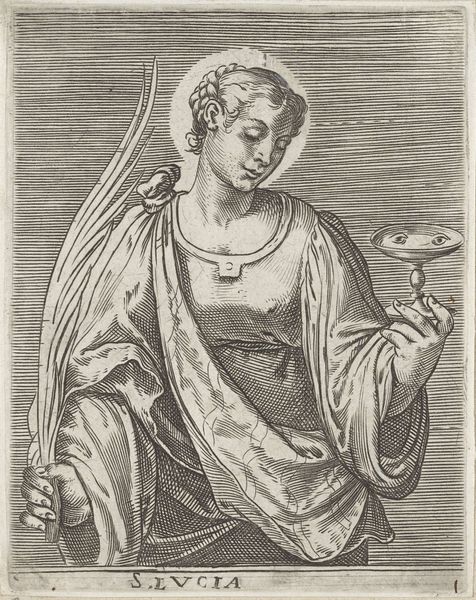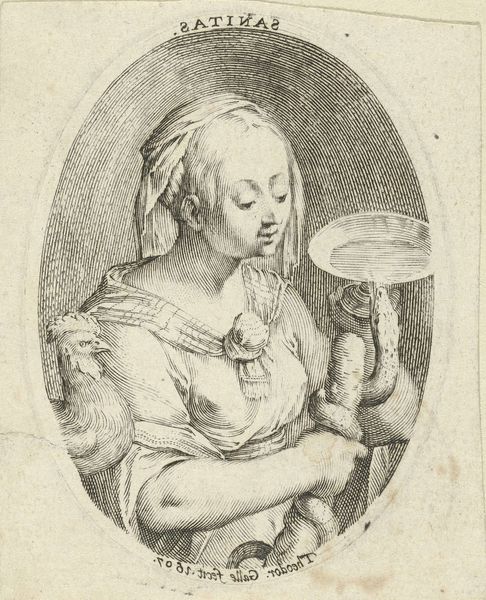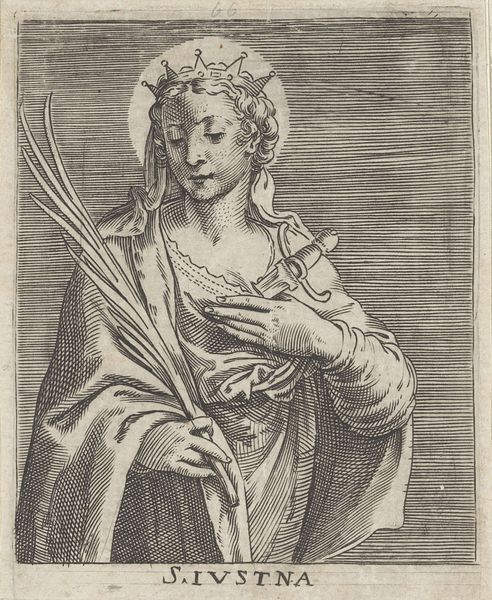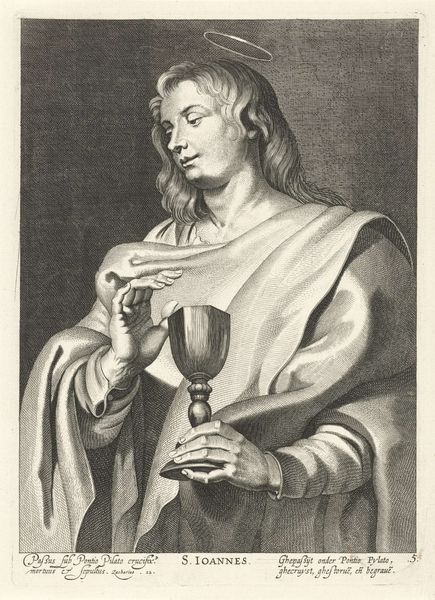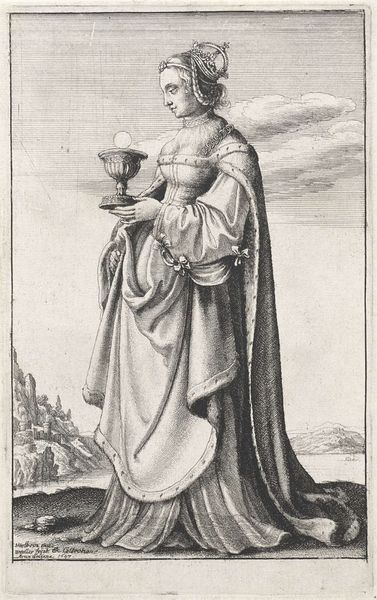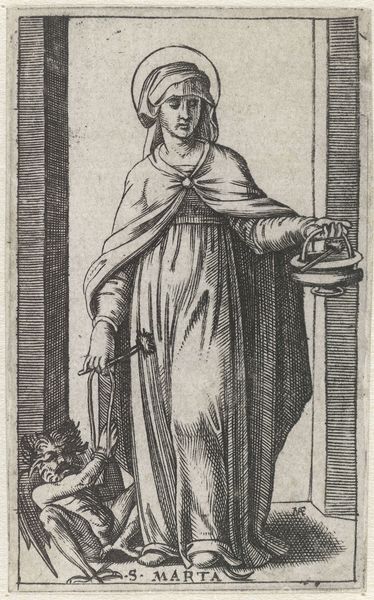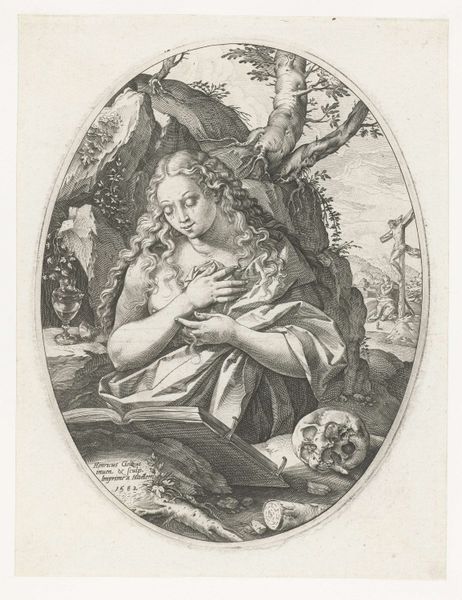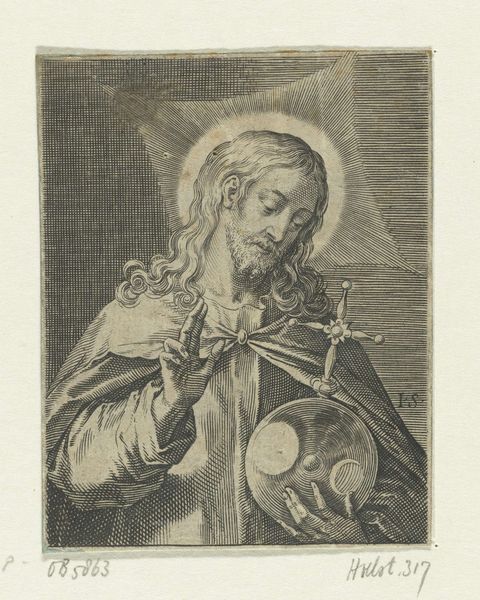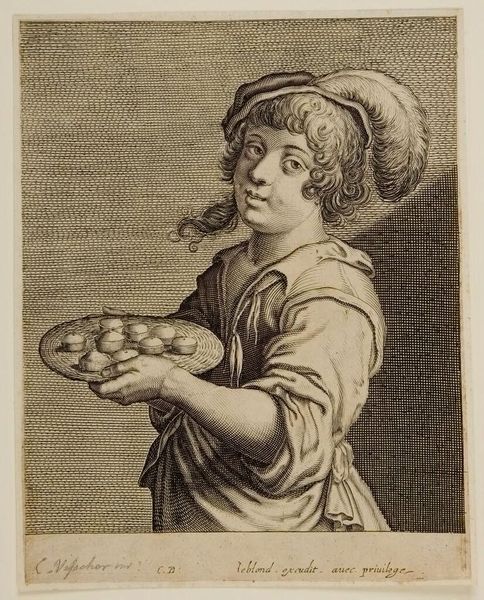
drawing, paper, ink
#
portrait
#
drawing
#
mannerism
#
figuration
#
paper
#
ink
#
portrait drawing
Dimensions: height 120 mm, width 91 mm
Copyright: Rijks Museum: Open Domain
Curator: Immediately I sense quiet grief; the controlled weeping before composure is regained. Editor: Indeed. What we see here is "Maria Magdalena", a drawing by Agostino Carracci, circa 1581. It resides in the Rijksmuseum. Carracci rendered this study using ink on paper, a particularly popular combination during the Mannerist period. Curator: That’s a lovely observation! Look at the exquisite use of line – those tightly woven, parallel hatch marks that define the shadowed drapery. It’s almost textile-like. You can nearly feel the weight of the fabric. The lines seem so delicate but give a very grounded appearance. Editor: Grounded perhaps, yet her eyes betray a celestial yearning. Notice how the chalice seems weightless in her grasp, an ethereal extension of her inner devotion? Almost like the halo above her head is part of the chalice as well? Curator: I see her face rendered with such subtlety compared to her hair that is chaotic in style, so much texture, like unruly thoughts consuming the pure. And it leads your eyes down from the heavens to what looks like the location of a heart-break? Editor: Perhaps a symbolic convergence: beauty marred, transcendence sought? As Carracci masterfully directs our gaze, the contrast between the earthly and divine blurs. This seems representative of Mannerism's goal to capture emotional intensity within strict formal parameters. The composition feels like a staged tableau where emotion and faith are carefully performed, a key stylistic element of Mannerist art. Curator: Right, but it's more than technical showmanship. I see her inner conflict mirrored in every stroke – the battle between repentance and acceptance; almost as if she is holding both concepts, represented by her holding the chalice and also touching her heart. The composition, ultimately, speaks to the complicated tension that dwells within. Editor: An intriguing perspective! It leads me to consider Carracci's possible intent here. Was it pure hagiography or a more psychologically nuanced portrayal? A drawing is not merely what is, but what can be and here it is perhaps a way to explore a figure trapped between holiness and human passion.
Comments
No comments
Be the first to comment and join the conversation on the ultimate creative platform.
